Mother Of Comatose Teenager Arrested By Iranian Security
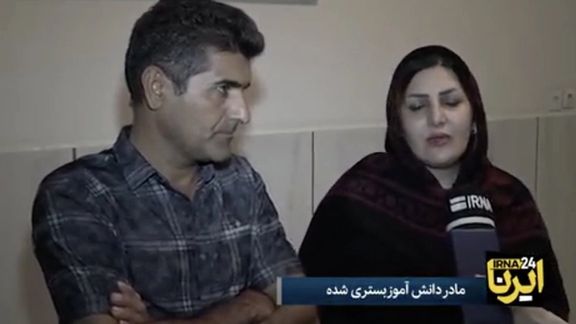
The mother of the teenage girl left comatose after an altercation with morality police on the Tehran subway, has been arrested by Iranian security forces.

The mother of the teenage girl left comatose after an altercation with morality police on the Tehran subway, has been arrested by Iranian security forces.
The news that 16-year-old Armita Geravand's mother Shahin Ahamadi, was arrested, was revealed on X on Thursday by the Iranian-Kurdish rights group Hengaw. Iranian state media has denied the arrest.
Geravand, who is currently in critical condition, was reportedly involved in a confrontation with authorities in the Tehran metro due to an alleged violation of Iran's hijab law. Geravand lost consciousness when her head struck a pole inside a subway car.
Despite claims by the regime that the teenager's family has viewed video footage from inside the train, her mother denies the claims. It is estimated that over five minutes of footage, including content recorded before Geravand lost consciousness, have been censored by the regime.
Fajr Hospital, where the teen remains in intensive care, is under tight surveillance, with security forces deployed around the facility.
Geravand's classmates are reportedly facing threats from regime security, discouraging them from releasing any photos or information related to the incident.
The Iranian regime has stationed hijab police at all subway stations in Tehran as part of an intensified hijab enforcement campaign as the Women, Life, Freedom movement continues to resist the mandatory hijab.

More than 40 member states of the UN Human Rights Council have expressed "serious concern" over the approval of Iran's new hijab bill it branded "gender apartheid".
The law imposes harsher penalties, including longer prison sentences and higher fines, on women who do not adhere to the country's strict Islamic dress code for head coverings and modest attire. Late in September, Iran’s Parliament announced that the bill was approved for a "three-year trial run" following coordination by the judiciary.
During a Wednesday meeting at the 54th Session of the Human Rights Council (UNHRC), the majority of the 47-member group endorsed a statement, initiated by Canada, condemning the Islamic Republic’s intensified measures to enforce hijab through the new bill. The statement was delivered by Canada’s Ambassador to the Council, Leslie E. Norton.
“We join our voices to those of the High Commissioner, Special Procedures, and the Fact-Finding Mission on Iran to express serious concern at the recent adoption of the Chastity and Hijab bill by the Iranian Parliament,” read the statement.
The contentious bill's content was finalized by a committee of approximately 10 lawmakers making the best use of an obscure regulation known as Article 85 of the constitution that enabled the parliament to effectively sideline opposition by restricting discussions on the bill to an internal committee. The only aspect voted upon was the duration for the trial implementation.
Raising alarm over Iran’s plans to deepen punishments for women and girls who do not obey its “draconian compulsory dress code,” the member countries decried the regime for seeking “to force non-complying women into an unprecedented social and economic siege", measures including travel bans, denial of education, health facilities and other public services. Private businesses will also be compelled to refuse services to uncovered women.
UN rights experts branded the new law as “gender apartheid" in September. Rights group Amnesty International said it will impose “draconian penalties” and called on the international community to pressure Iran to revoke the 'despicable' bill.
The signatories also voiced worries about the ever more invasive use of artificial intelligence and facial recognition technology to crack down on women who defy hijab. They say the recently introduced measures worsen the already dire situation for women and girls, “marked by widespread and systematic discrimination in law and practice, in many aspects of their public and private life.”
Referring to the nationwide movement that rallied behind the slogan “Women, Life, Freedom,” the group urged Iranian authorities to heed to the legitimate claims of protesters, and to abide by its obligations under international law, including in matters of women’s rights and gender equality.
“Women and girls of Iran should not be treated as second class citizens and must enjoy the full array of their human rights, free from discrimination, surveillance and fear of retribution,” added the statement.
The move came as an Iranian teenager, Armita Geravand, is in coma following a violent encounter with hijab enforcers at Tehran’s subway. Authorities are handling the situation exactly as they did in the case of Mahsa Amini, with blackouts on CCTV footage, arresting her mother and the journalist who tried to cover the case. Routine denials continue from the highest levels of the regime and massive security is in place around the hospital in which she is in intensive care.
The UNHRC courted global controversy earlier this year when it invited Ali Bahreini, Ambassador of the Islamic Republic of Iran and Permanent Representative to the United Nations, to chair the 2023 UNHRC Social Forum next month. The move gained widespread criticism. The European Parliament said the appointment "is nothing more than a slap in the face given the human rights situation of most Iranians, particularly women, and the repeated executions in the wake of the ongoing protests in the country", in addition to its appalling handling of the pandemic in which it refused to accept Western vaccines at the cost of hundreds of thousands of lives.
The United Nations also came under fire last month for allowing President Ebrahim Raisi to take the stage at the annual General Assembly, giving voice to the regime narrative in which he claimed Iranian women's rights are "unparalleled".
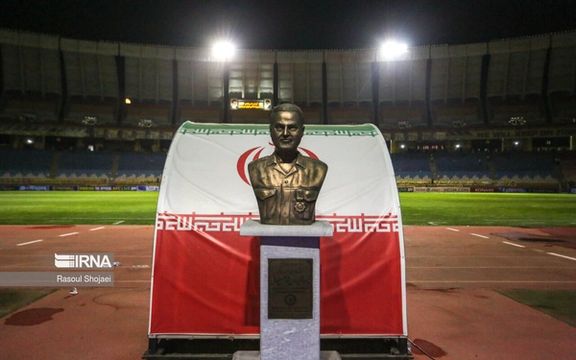
Regardless of what many might say about IRGC’s Qassem Soleimani and his role as a terror mastermind, even after his death he continues to disrupt good neighborliness.
The Iranian regime has displayed his banners, posters and dozens of statues and busts all around the country to honor its "hero", which brings home the sense of how far the regime is from understanding the prevailing mood in Iran and in the region.
The statues and busts made of him are far from descent and are often mocked by not only art critics, not only from art critics but also from the public. Notably, the controversial bust located at the Naghsh-e Jahan stadium in Esfahan garnered attention when it irked members of the Saudi al-Ittihad football team to the extent that they returned to Riyadh before their scheduled AFC championship match against Iran's Sepahan team.

This sculpture, like all others, failed to convey grandeur or military might and fell short of capturing the essence of an internationally recognized figure, even if that figure happened to be a notorious terrorist despised by many regional countries threatened by him before he was killed by a US drone strike in 2020. In short, it was far from being a piece of art.
The individuals who commissioned these sculptures are the same hardliners who orchestrated the torching of the Saudi Embassy in Tehran and its consulate in Mashhad in January 2016. Whether placing Soleimani’s bust in a football stadium right before a match with a Saudi team was a mere coincidence or a deliberate attempt, the outcome is nothing short of a blatant sabotage effort aimed at undermining the newly restored Tehran-Riyadh relations.

The presence of the bust posed a security and public diplomacy challenge that may or may have not been meant to unfold before the eyes of millions of viewers waiting for the match on satellite televisions or online.
Even without the challenge, the slogans shouted by male spectators protesting the ban Iranian women from going to stadiums to watch football was embarrassing enough. Political commentator Abbas Abdi in Tehran likened the decision to prohibit women from entering stadiums to a Catch-22 situation, one that the Islamic Republic is unable to tolerate yet also cannot disregard under pressure from the international athletic community.
Social media users posted a video depicting a senior policeman telling women that only a limited handpicked group of female spectators would be allowed into the stadium.
As the Saudi team departed Iran without playing in Esfahan, Iran's hardliner media and politicians resorted to conspiracy theories to justify what had gone wrong. Some claimed that Ittihad did not want to face Sepahan, but this explanation failed to address why the bust was placed at the stadium, especially when the Saudis had previously protested the presence of Soleimani's photos at a news conference venue in the Iranian foreign ministry.

Was this another attempt by hardliners opposing the rapprochement with Saudi Arabia? While no one can say for certain, it is a plausible scenario, particularly given that some politicians have sought to undermine progress in Tehran-Riyadh relations, which some argue Iran only accepted under immense pressure from China and its regional interests.
Furthermore, Iran's hardliners are likely to attempt to sabotage the newly restored ties at every opportunity. Even Iran's Supreme Leader, Ali Khamenei, did not miss the chance during Unity Week, a period commemorating unity among various Muslim sects, to criticize Saudi Arabia for its efforts to improve relations with Israel.
Iran's Foreign Minister, Hossein Amir Abdollahian, claimed to have spoken with his Saudi counterpart over the phone to address the issue, but he did not disclose the results of these discussions.
The chants of tens of thousands of spectators quickly shifted from demanding the removal of the bust to calls for regime change and ominous cries of 'Death to the dictator.'
In the words of an Iranian proverb, “Now bring your donkey and load the spilled beans,” or as another Persian saying goes: “An insane man throws a stone into a water well that a hundred wise men cannot retrieve."
The opinions expressed by the author are not necessarily the views of Iran International
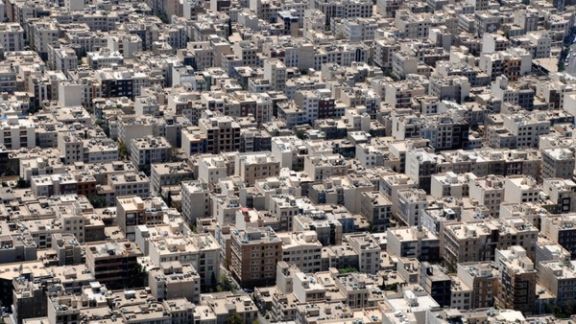
Rents in Iran have surged by 60% over the past year, with 12 provinces experiencing increases exceeding 70%.
The figures were released by the Eco Iran website, citing statistics from the government-run Statistical Center of Iran for the Iranian year up until March 2023.
In the previous year, 20 provinces, equivalent to 64.5% of Iran's provinces, witnessed rent growth rates surpassing the national average. The report also highlighted that rent inflation in Tehran province exceeded 52%, resulting in the average monthly household rental cost in Tehran province rising from $105 in 2021 to $160.
Additionally, data from the Statistical Center of Iran indicates that the average expenses for housing, water, sewage, fuel, and electricity surged by nearly 60% during the same period.
For around one year, both the Statistical Center and the Central Bank have ceased publishing regular reports on developments in the housing market, drawing criticism from economic experts and the construction and real estate sectors.
Recently, officials from the Ministry of Roads and Urban Development have prioritized restricting property buying, selling, and renting platforms with real estate consultants and property transaction platforms having been accused of contributing to price hikes.
The situation coincides with a report from the Donya-e-Eqtesad newspaper, indicating that the nationwide growth in rent prices from March to September 2023 has reached its highest level in 12 years, surging to 38.5%.
Reports from mid-2022 previously highlighted a staggering increase of over 300% in Tehran's rental prices within a three-year timeframe. Additionally, statistics released in December 2021, around six months after Ebrahim Raisi assumed the presidency, revealed that food and housing costs had surged by 300% to 740% over the preceding six years.
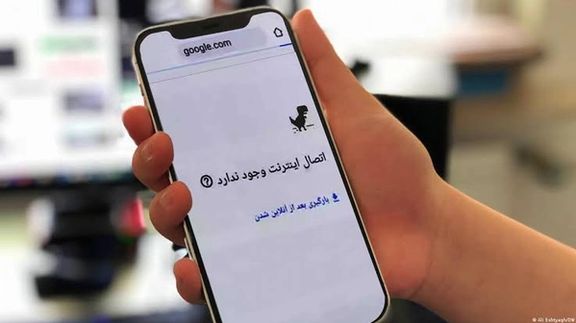
Iran saw the most significant decline in internet freedom in 2023, as authorities attempted to suppress protests associated with the Woman, Life, Freedom movement.
The latest Freedom House report specifically highlights Iran's sharp decrease in scores among the assessed countries, mainly due to the authorities' harsh and disproportionate response to nationwide protests that erupted after the death of Mahsa Amini while in custody in September last year.
The crackdown included the arrest of numerous protesters, particularly women who used social media to voice their opposition to the government's discriminatory hijab policies. Additionally, the government imposed restrictions on internet services, blocked platforms like WhatsApp and Instagram, and expanded its surveillance measures.
The Middle East in general continued to experience limitations on internet freedom in 2023, as indicated in the latest report titled Freedom on the Net 2023: The Repressive Power of Artificial Intelligence.
Notably, none of the seven Middle Eastern countries evaluated received a "Free" rating. Lebanon, Jordan, and Iraq were classified as "Partly Free," while the remaining four – the United Arab Emirates, Bahrain, Saudi Arabia, and Iran – were categorized as "Not Free."
Among these, Iran had the lowest overall score in the region, with 11, and experienced the most substantial decline with a decrease of -5 on Freedom on the Net's 100-point scale.
Freedom on the Net is an annual assessment of human rights in the digital realm. The project examines internet freedom in 70 countries, covering nearly 89 percent of the world's internet users.
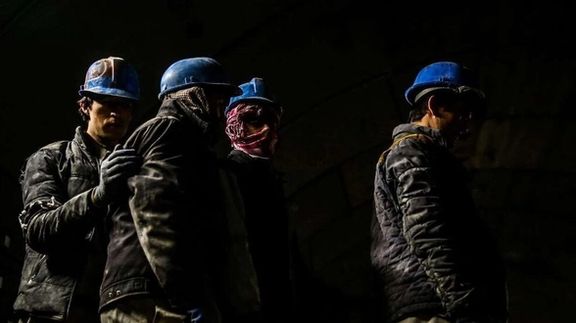
Due to Iran's raging inflation and stagnant economy, the minimum wage has fallen so far behind that tens of million have joined the ranks of “the working poor.”
Etemad, a prominent reformist daily in Iran, published an article on Wednesday, highlighting the alarming growth of poverty affecting workers whose incomes have fallen below the poverty line. The paper reported that workers' wages now only cover approximately 60 percent of their monthly household expenses.
There are different figures for the 'poverty line in Iran'. By one definition, it is a level of income that covers the minimum essential needs of a household, and incomes below the line are referred to as "absolute poverty”. According to Mohammad Bagheri-Banai, a lawmaker and member of the parliament’s economic committee, the poverty line for residents of Tehran, is around 300,000,000 rials (approx. $600) per month, which is three times as much as the minimum wage in Iran.
According to a report published by ILNA website in January, one-third of the country’s population is now living in extreme poverty, with the number almost doubling from 2020 to 2021. However, it is believed that the real number could be far higher. According to official figures released by Interior Ministry, around 60 percent of Iranians live under the relative poverty line.
Currently the official annual inflation rate is just below 50 percent – the highest rate in Iran for more than 30 years -- but prices for foodstuff are most affected, with cooking oil rising by more than three times the annual inflation at 145 percent, and the price of meat also rising by 78 percent over a one-year period (point-to-point).
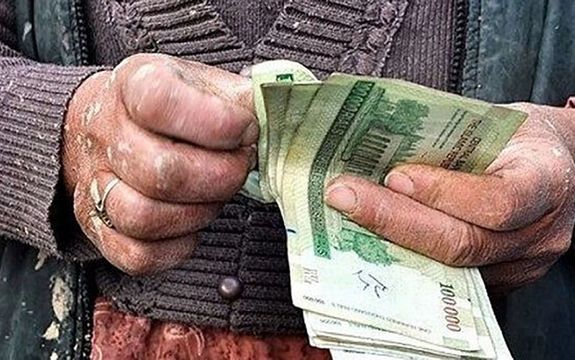
The key factor to lower inflation and boost incomes is economic growth. Despite various claims by the government, the growth rate has been nearly null over for over a decade. In January, the World Bank projected Iran to have a 1.9-percent GDP growth, but the figure, even if true, comes on the back of two years of deep recession in 2019-2020.
The current downturn in the country’s economy proves that Iran’s economic growth – even if it exists – has not led to job creation, Etemad said, claiming that employment generation was "low-quality".
This comes as Iran's seventh development plan, set to be implemented next year, addresses employment in just one article, which surprisingly focuses solely on home-based businesses and small enterprises. The seventh development plan is supposed to provide a roadmap for the country's economic and social future. However, according to Etemad’s assessments, there is little hope for significant improvements in employment generation.
In addition to the mounting crisis of the working poor, the daily claimed that in the past five years more and more people have become discouraged in their job hunting and are no longer actively seeking employment.
According to Article 41 of the Labor Law, the Supreme Labor Council is mandated to determine the minimum wage for workers each year. However, the government is not obligated to set wages according to the figures announced by the council. It increases wages according to its own interests. The discrepancy has caused widespread labor protests during the past several years.
On the other hand, increasing the minimum wage raises the overall cost for businesses, leading to workforce layoffs or a reluctance to hire new employees.
Incomes in Iran began to lag behind inflation after the establishment of the Islamic Republic in 1979, but salaries were increasing from 2000-2010 when monthly minimum wage hit a high of about $275 in 2010. This coincided with the time when the United Nations Security Council began imposing sanctions to force Tehran to roll back its nuclear program. The rial lost half of its value since last year and the minimum wage, without housing allowance, has dropped to around $120 a month.